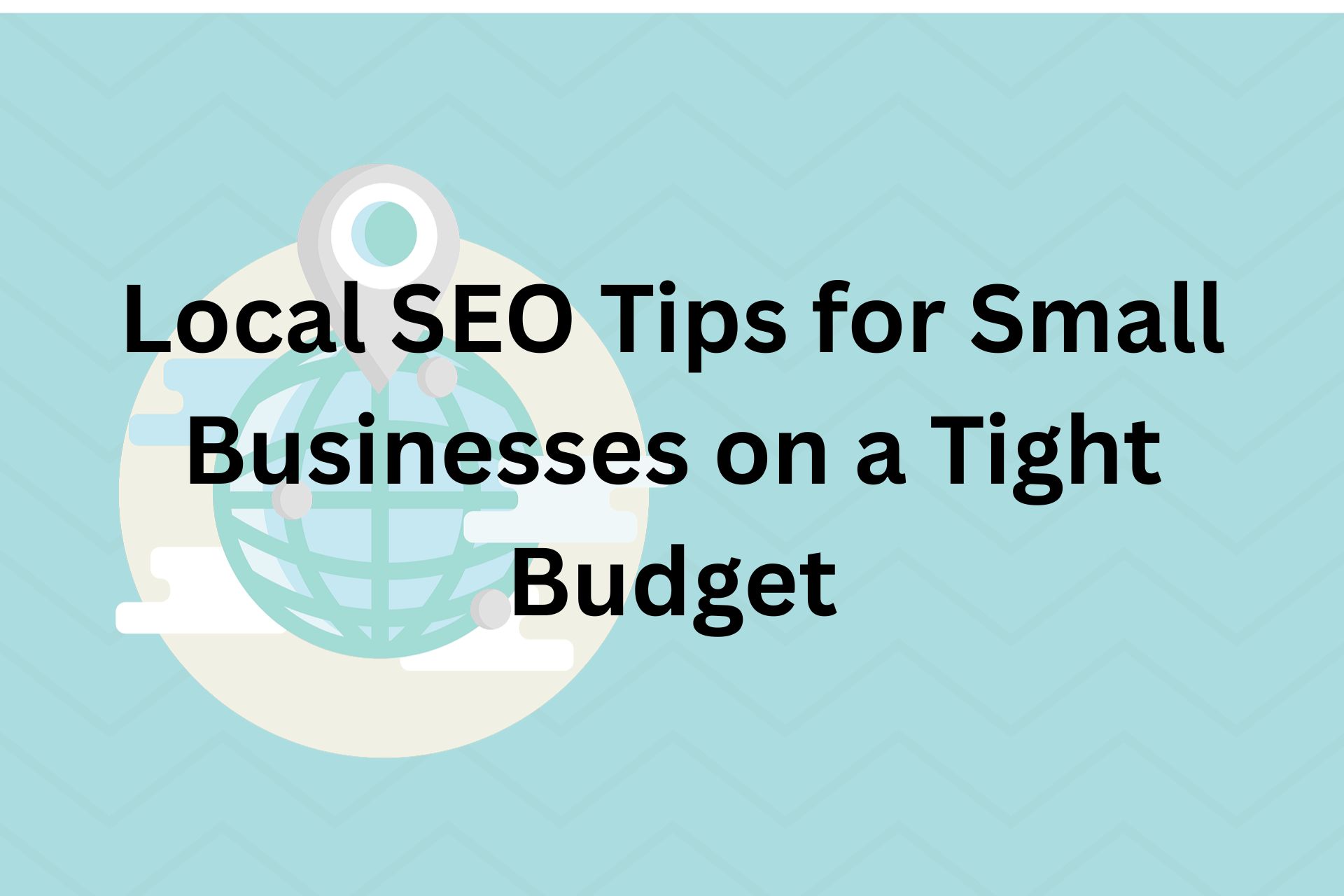Running a small business is no small task—especially when every rupee, dollar, or euro counts. You’re wearing multiple hats, handling customer calls, managing inventory, and somehow also trying to figure out how to get your business to show up on Google when someone nearby searches for your service. Here’s the truth: you don’t need a big marketing budget to get noticed. You just need the right local SEO strategy—and a clear plan to execute it.
The digital world is crowded, but local SEO clears a path. It gives small businesses a fighting chance to compete with big brands by showing up where it matters most—in front of nearby customers actively searching for what you do. And contrary to what you might believe, it’s not about pouring money into paid ads or hiring the biggest agency in town.
This guide walks you through actionable, cost-effective strategies that actually work. No fluff. No guesswork. Just real-world, budget-friendly local SEO tips tailored for small business owners who want results.
Let’s begin with the basics—because understanding what local SEO really is can make all the difference in how you apply it.
What is Local SEO?
Local SEO, or Local Search Engine Optimization, is the process of optimizing your online presence so your business shows up in local search results—especially on Google. Think “cafe near me,” “emergency plumber in Nagpur,” or “best tailor in Brooklyn.” That’s local SEO in action.
It focuses on three core elements:
- Relevance – how closely your business matches the search query
- Proximity – how close your business is to the searcher
- Prominence – how well-known or trusted your business is, based on reviews, citations, and content
It’s a strategic way to get your business in front of real, ready-to-buy customers in your area—right when they need you.
Why Local SEO Matters for Small Businesses
Small businesses live and die by their local customer base. You don’t need traffic from across the country—you need your city, neighborhood, and community to find you when they search online.
And they are searching. According to Google, nearly 50% of all searches have local intent. What’s more—78% of local mobile searches result in offline purchases. That means your visibility on Google isn’t just about rankings—it’s directly tied to foot traffic, phone calls, bookings, and real sales.
For small businesses, local SEO is not just another checkbox—it’s your digital storefront. And if it’s not optimized, your competitors are gladly taking the business you’re missing.
The Budget Challenge: Doing More with Less
Let’s be blunt—marketing budgets for small businesses are often tight. And when cash is limited, local SEO might seem like something you simply can’t afford to do.
But here’s the kicker: it’s one of the most cost-effective ways to market your business—because many of the most impactful tactics are either free or low-cost. The challenge isn’t spending more; it’s spending smarter.
This guide is built to help you do exactly that. Every step ahead is something you can start today—with little to no budget.
1. Optimize Your Google Business Profile
If you do nothing else for local SEO, do this. Google Business Profile (formerly Google My Business) is the most powerful free tool for getting visibility in local search results.
Here’s how to optimize it:
- Claim and verify your business
- Add complete and accurate information: business name, address, phone number (NAP), website, hours, and business category
- Write a keyword-rich business description
- Add high-quality photos of your location, products, or services
- Post updates, offers, and events regularly
- Enable and respond to reviews
This is what helps you appear in Google’s “Map Pack” (the top 3 local listings). It’s high-impact, free, and essential.
2. Focus on Local Keywords
People don’t just search for “pizza delivery”—they search for “pizza delivery in Jaipur.” That’s where local keywords come in.
- Use tools like Google Keyword Planner, Ubersuggest, or AnswerThePublic to find terms people use in your area.
- Include these keywords in your:
- Page titles
- Meta descriptions
- H1s and H2s
- Body content
- Image alt tags
Examples:
- “affordable plumber in Ahmedabad”
- “kids dentist near Bandra”
- “boutique in Connaught Place”
These long-tail, location-rich keywords help your site show up when real people search with local intent.
3. Make Sure Your Website Is Mobile-Friendly
If your website loads slowly, breaks on phones, or forces users to pinch and zoom—it’s killing your local rankings and user experience.
Here’s a checklist:
- Use responsive design so your site works on any screen size
Compress images for faster load times - Make key actions—like calls, bookings, or directions—easy to access
- Avoid pop-ups or intrusive elements that block content
- Test your site with Google’s Mobile-Friendly Test tool
Google indexes mobile versions first. A mobile-optimized site isn’t optional—it’s fundamental.
4. Use Local Business Directories
Getting listed in trusted local directories helps improve your online visibility and builds your business’s credibility.
Start with:
- Yelp
- Bing Places
- Apple Maps
- JustDial (India), YellowPages, Foursquare, HotFrog, or city-specific directories
- Chamber of commerce sites or industry-specific listings
Make sure your NAP information is identical across every platform. Inconsistencies confuse search engines and hurt rankings.
5. Create Location-Based Content
Content is still king—but for local SEO, local content is the real ruler.
Ideas you can easily execute:
- Blog posts about community events, local partnerships, or area-specific trends
- Case studies or testimonials from local clients
- Dedicated landing pages for specific locations you serve
- FAQ sections that address location-specific queries
This not only improves rankings—it builds local trust and authority.
6. Build Local Backlinks for Free
Backlinks (when other sites link to yours) tell search engines your site is trustworthy. And you don’t need an outreach budget to start earning them.
- Collaborate with local businesses and cross-promote
- Submit guest posts to local blogs or news sites
- Join business associations that link to members
- Get mentioned in local event pages or press coverage
- Offer testimonials to vendors and ask for a backlink in return
Local backlinks are more relevant for local SEO than high-authority global links. Prioritize quality and location.
7. Use Social Media to Support Local SEO
Let’s be honest—when most small business owners hear “SEO,” social media isn’t the first thing that comes to mind. But here’s the twist: while social media doesn’t directly influence your rankings, it absolutely impacts how your business shows up in the real world.
Local SEO is about visibility and trust. Social media boosts both.
- Boost your local presence. Platforms like Facebook, Instagram, and LinkedIn allow you to geo-tag posts, join local groups, and engage with customers right in your area. Every time someone shares, saves, or comments on your posts, it signals relevance—and relevance drives visibility.
- Share locally relevant content. Post about neighborhood events, community shoutouts, local collaborations, or customer stories. These aren’t just posts—they’re micro touchpoints that help Google understand your business is rooted in the local community.
- Drive website and profile traffic. Use social media bios and posts to drive people to your website, service pages, or Google Business Profile. More traffic means more data points for Google to assess your credibility.
- Consistency matters. Inactive accounts suggest an inactive business. You don’t need to post every day, but a few times a week? Absolutely. Show up. Stay visible.
Bottom line: social media won’t win you Page 1 on its own—but it amplifies everything else you’re doing to get there.
9. Encourage and Manage Online Reviews
If SEO is the road to visibility, reviews are the signs that point to trust.
Why? Because when potential customers search for “best bakery near me” or “top physiotherapist in [your city],” they’re not just looking for businesses—they’re reading reviews. And Google’s algorithm knows that.
Here’s what matters:
- Ask—don’t wait. Happy customers don’t always think to leave a review. Ask them at the right moment—after a great service experience or a successful delivery. Use SMS, email, WhatsApp, or a printed card with a QR code. Make it easy.
- Prioritize Google. While platforms like Yelp, Facebook, and industry-specific sites matter, Google reviews carry the most SEO weight.
- Respond to every review. Not just the glowing ones. Thank people for positive feedback and address concerns in negative reviews. Be calm, kind, and helpful. Potential customers will be watching how you respond.
- Stay consistent. One review every six months won’t help. Aim to collect reviews steadily. That steady stream tells Google your business is active and trusted.
In short: real reviews from real people, managed professionally, are your local SEO power play.
10. Stay Consistent and Patient
If you’ve made it this far, here’s the most important takeaway: local SEO rewards consistency.
You can’t do it all once and expect miracles. Local SEO is not about hacks—it’s about habits. And the businesses that win long-term are the ones that stay committed.
Here’s what to do consistently:
- Update your Google Business Profile. Keep it fresh with posts, photos, and accurate hours.
- Check your citations. Once a quarter, audit your business listings for NAP accuracy.
- Create content regularly. Even a blog or page every month that speaks to a local audience keeps your site alive in Google’s eyes.
- Monitor and respond to reviews weekly.
- Check performance monthly. Use Google Analytics and Search Console to track what’s working and where you can improve.
You’re not building a viral moment—you’re building visibility that compounds over time. Do it right, and your business won’t just appear in local search—it’ll own it.
Conclusion
Local SEO is no longer optional—it’s essential. For small businesses trying to compete in a digital-first world, showing up in local searches means staying visible, relevant, and accessible to the customers who matter most. And the best part? You don’t need a big budget to make a big impact.
From optimizing your Google Business Profile to building free local backlinks and encouraging reviews, every tactic we’ve covered is doable—even if resources are tight. What it takes is clarity, consistency, and commitment.
If you’re serious about growing your presence without burning through your budget, partnering with a team that offers affordable local SEO services can give you the support, structure, and strategy to get there faster—without the guesswork.
Stay the course. The results will come—and they’ll be worth every smart move you made to get there.
FAQs
1. How much should a small business spend on local SEO?
You can get started with little to no budget if you’re willing to do the work yourself. That includes optimizing your Google Business Profile, building citations, and creating local content. If you hire a freelancer or small agency, expect to spend anywhere from $200 to $800 per month depending on your goals and competition. But remember—smart execution beats big spending.
2. Can I do local SEO myself?
Yes. Many small business owners successfully handle their own local SEO. Start with the basics: claim your Google Business Profile, use local keywords on your site, get listed in directories, and ask customers for reviews. Tools like Google Search Console, Google Analytics, and free audit tools can guide you. As your business grows, you might choose to outsource parts—but doing it yourself is absolutely possible.
3. How long does it take to see results from local SEO?
In most cases, local SEO starts showing results within 3 to 6 months. You may see quick wins like better visibility in Google Maps or a few new reviews in the first few weeks. But solid, consistent growth in rankings and traffic takes time—especially in competitive markets. Stick with it, and the results will follow.
4. What’s the most important part of local SEO for a beginner?
Without question: optimize your Google Business Profile. It’s free, fast, and has a massive impact on visibility. Make sure it’s verified, fully filled out, regularly updated, and loaded with customer reviews. It’s your digital storefront—treat it like one.
5. Do social media posts affect my local SEO?
Not directly—but they help indirectly in big ways. Social media can increase local brand awareness, drive traffic to your website or listings, and encourage engagement that signals relevance. More brand searches, backlinks, and content shares all contribute to your overall SEO strength. Think of it as the bridge between your business and your community.


